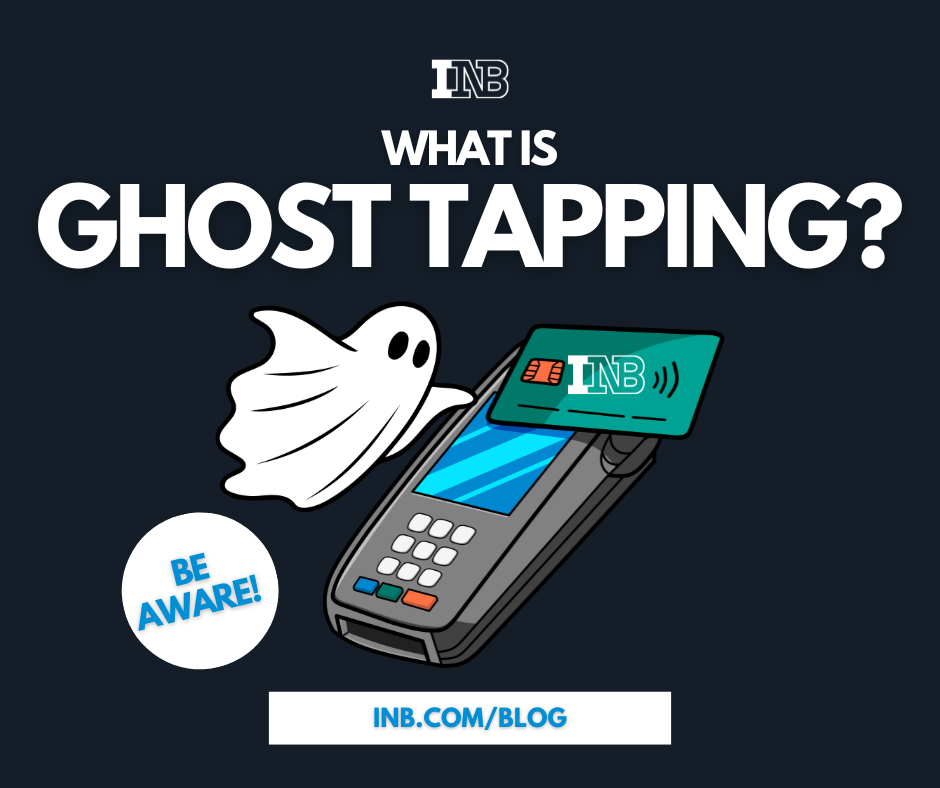What Is “Ghost Tapping”?
Ghost tapping is a digital payment fraud tactic where criminals use stolen card or mobile wallet data to complete purchases through fake “tap-to-pay” transactions.

Here’s how it happens:
1. Your card or wallet data is stolen
Scammers can capture your payment information in several ways—through phishing emails, malware, or even data breaches. But increasingly, scammers are taking a more personal approach.
They may pose as vendors at community events or fundraisers, asking for quick tap-to-pay donations or purchases. These interactions often feel casual and trustworthy, which is exactly what they’re counting on.
If someone rushes the payment process or insists that “your first card didn’t go through” and asks you to try again, pause before tapping again. Those could be signs of a scam in progress.
2. They load your information onto a burner phone or virtual wallet
This allows them to clone your payment method and prepare it for fraudulent transactions.
3. They use Near Field Communication (NFC) relay tools to simulate your tap
When the fraudster’s device “taps” a terminal—even miles away—it appears as if your card or phone was physically present.
4. The transaction goes through
Because it looks legitimate to the payment system, the charge is often processed without immediate detection.
The result? Money leaves your account without your knowledge—sometimes through a series of small test purchases before larger ones occur.
How It Differs from “Ghost Touching”
It’s important not to confuse ghost tapping with ghost touching, which refers to random touchscreen taps caused by a hardware or software glitch.
Ghost tapping, by contrast, is an intentional form of fraud that exploits contactless payment technology to steal funds.
Warning Signs You’ve Been “Ghost Tapped”
Be on the lookout for:
- Small, unfamiliar transactions—often just a few dollars
- Charges from cities or merchants you’ve never visited
- Notifications that your card was linked to a new device or wallet
- Your phone behaving strangely (e.g., new apps or slowed performance)
If you see any of these red flags, act fast—fraud protection is most effective when reported immediately. Call INB if you suspect fraud at 877.771.2316
How to Protect Yourself
Here are some simple ways to reduce your risk:
- Stay cautious with links and messages.
Don’t click on unexpected emails or texts asking for your banking or payment information.
- Keep your device software up to date.
Updates often include important security patches.
- Enable transaction alerts.
Get instant notifications from your INB account when a purchase is made. Learn how to manager your Account Alerts here.
- Use an RFID/NFC-blocking wallet.
These prevent unauthorized contactless scans of your cards.
- Regularly review your statements.
Log into your INB Digital Banking app or review monthly statements for any unauthorized activity.
If something looks off, contact INB immediately. Our team can quickly block your card, issue replacements, and start the dispute process for fraudulent charges.
INB’s Commitment to Your Security
At INB, we take your safety seriously. Our fraud monitoring systems use advanced technology to detect unusual spending patterns, while our staff is trained to respond quickly to protect your accounts.
But your awareness matters just as much. Together, we can stop fraud before it starts.
Need Help or Have Questions?
If you think you’ve been affected by ghost tapping or want to learn more about protecting your digital payments:
Stay secure. Stay informed. Stay confident—with INB.